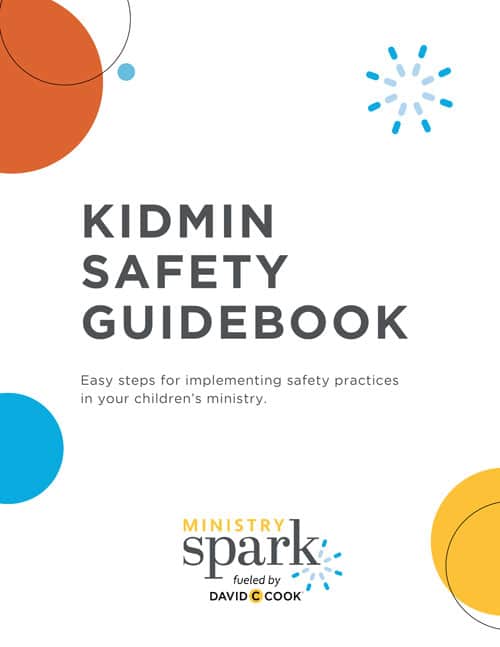This article has been transcribed and edited from our webinar Leading a Trauma-Informed Ministry: Start at the Beginning. You can watch the full webinar here.
All behavior is communication.
Lead a Trauma-Informed Children’s Ministry
Byron Ragains:
Our guests today come to us from Reach Hurting Kids: Dr. Robert Crosby, PhD; Lori Crosby MFT, RPT-S; and Kayla Smith.
The first question for us today is: What is childhood trauma and how common is it?
Dr. Robert Crosby PhD:
The technical definition of childhood trauma is any threatening event or situation that causes long-term harm to a child’s development. It harms their social, emotional, mental, relational, spiritual, and/or physical wellbeing.
Traumatic Event
A traumatic event could really vary. In the research, sometimes they’ll look at things like different types of child abuse and neglect, having mental illness in the home, maybe a parent who’s in prison. It can be a whole variety of things. But of course, you could have natural disasters, a shooting in your community, a divorce, bullying at school. So, what really differentiates trauma for one person is going to be subjective to them because it has to do with their resiliency.
How capable are they of coping with this event? That has to do with this person’s coping mechanisms more than the event itself.
When someone cannot cope—maybe because they don’t have family support at home; they don’t have emotional, social, emotional skills; or they have bad nutrition or poor sleep—it’s hitting them harder in terms of prevalence. These types of events are potentially traumatic events and are common. The research shows that from 2 out of 3 to 3 out of 4 kids are going to experience some kind of potentially traumatic event by the time they’re 18. So, by any standard you could look across different studies and research methodologies, most of the kids you’re working with will have something potentially traumatic happen to them.
Now, how it hits them is going to vary from child to child.
Traumatic Impact
If we talk about traumatic impact, it’s significant there too. We see a child mental health crisis going on right now. There’s something called the Middle School Youth Risk Behavior Survey. The CDC ran this recently in 2021. Among sixth graders, 11- and 12-year-olds, we saw that 1 in 5 has seriously considered suicide. One in 7 has planned how they would kill themselves. And 1 in 12 has tried to kill themselves.
So, if you have elementary school kids in front of you, basically of any age, there’s a decent chance that you’ve got kids in the room who have suicide on their mind.
The average 9-year-old is spending 4-6 hours a day on their phone or on tablets. That’s part of why we’re seeing this big increase in mental health issues.

Lori Crosby MFT, RPT-S:
It’s heavy stuff. But I want to add that there’s hope in that we get to walk alongside these hurting children. As a therapist, I have seen this the heaviness and the intensity, and I have sat with my clients with their believing families. It’s heartbreaking.
Kayla Smith:
Every time I hear these statistics, I’m burdened by the fact that there’s just so many hurting kids. And how can we make an impact? But that’s where the church has a special place right now. God has created us for this moment.
I think of Colossians 3:12. As God’s chosen people, we are to clothe ourselves with things like compassion and kindness and humility and gentleness and patience. Right? So, we don’t face these challenges without hope.
We face these challenges with the hope of Christ—the Christ who calls us to clothe ourselves as His own character with compassion and kindness and humility and gentleness and patience in the face of really big trauma.
So, I see the church coming alive in a way that is that is only Jesus, especially in a trauma-informed ministry. It’s only Jesus to meet despair with hope. It’s only Jesus to meet death with life. And so, if this is a moment where we’re seeing death, and we’re seeing despair, and we’re seeing destruction, then praise God because He is hope. I think right now, like the church has a real opportunity to step in and be the light in this world.
I see the church coming alive in a way that is that is only Jesus.
Byron:
How do we help a children’s pastor navigate this? How do we communicate this in a usable way to the leadership? Then, how do we distill it down to volunteers?
Kayla:
We realize children’s pastors are not reading academic articles. We don’t have time; we don’t have space to fit that in. And how in the world are we going to get a team of volunteers to read an academic article on trauma? That’s not going to happen.
And because of that realization, after years of conversation and the book that Robert and Lori have written, we talked about that exact question.
Bringing Hope in Trauma-Informed Ministry
I am not a therapist, but I do believe that the church can serve a therapeutic role here. The Reach Hurting Kids Institute developed a four-module workshop that trains volunteers on how to do this. And the whole point is to have the training in accessible language and share about situations in a story-based form, so that any volunteer, whether they understand child development or not, can start to understand the basics.
We as a church have a responsibility to learn those stats that Robert went over and then learn what Lori said—that we come from hope. We have the opportunity to bring hope to this conversation.
Once we learn to realize what’s happening and that these could be signs of trauma, we learn to recognize what behaviors mean. They could be a signal to us that something’s going on under the surface, and then we learn how to respond.
Robert:
Once you realize these basics, you’re able to recognize trauma. If a child were to come in and maybe look down and not respond to you, or maybe give you a rude response, or not participate, you wouldn’t be angry with them because you would understand there’s likely something going on that’s deeper. You would feel compassion.
The problem is that most of the time we don’t know what’s going on in the background. So, instead, Michael walks in and he looks down and walks away, and you think, wow, that was rude. Or you feel personally offended or at best confused. And then he won’t participate. Well, why isn’t Michael participating? Does he not care about the Bible? Is he just a bad student? Is he just giving me a hard time? Is he being defiant?
When attribute all these negative attributions to the child, we get frustrated or angry and start thinking about discipline. Right?
“Well, see, I have this kid who’s talking back, or this kid who’s being defiant, or this kid who won’t participate, or this kid who fill in the blank. How do I get him to behave? Should I get his parents? Should I make his parents sit with him? Should I suspend him from the group? Should I not give him raffle tickets?”
And our mind’s going there, rather than immediately going to, “something’s wrong.” What we encourage people to do when we see a behavior issue is to immediately think, “something’s going on in this kid’s life.”
We don’t have to play detective and figure out if they are lying, etc. Instead, we encourage you to assume there is a reason. And it’s your job, not to uncover the reason, but to be curious about the behavior instead of personalizing the behavior and making it about you. Get curious as to what’s going on in that child’s life and have empathy for them and join with them in the place that they entered in from.
Only Jesus can meet despair with hope.
Lori:
Yes, and you can just be a therapeutic presence that communicates that I see you, I hear you, I understand, and I care. And over time, you build a relationship, and the best trauma-informed response is relationship. You can’t come alongside and minister to hurting children if you don’t have a relationship first. Building relationship through play, sitting down on the floor and doing Legos with them, or playing games is how you start to build that relationship and that trust. And then maybe over time they will share what’s going on. But throughout that process, you’re showing them Jesus. You are being Jesus to them by your actions.
It’s not transactional. You may never know what’s going on, but your love and care will have mattered just the same.
Byron:
So good. How do we recognize the signs and symptoms of trauma in our children’s ministry? So, thank you so much for laying that out. What would you add?
Kayla:
Keep your eyes open for what’s different today about each kiddo. So, when Lori says that relationship is the trauma-informed strategy, that could not be more true. When you know someone, and they’re acting differently than usual, that’s something that helps us see that something’s up. And like Robert said, it could be as simple as they stayed up all night eating pizza at a slumber party, so they don’t feel great. They’re very tired, and they’re super cranky <laugh>. That’s what’s up. And it helps you to know. But pendulum swings happen everywhere in society. And one of the pendulum swings that happens in children’s ministry is that, in the name of safety, we have kind of removed the relationship piece.
But unfortunately, in the name of emotional and the physical safety, we’ve removed a relational piece to children’s ministry. We absolutely pursue the safety of the child, for sure. But when you don’t have the relational piece, you don’t notice when something is off unless it’s a big, huge behavior or a huge language that says that there’s something. And when you’re not noticing those subtle cues, you don’t know that something’s going on. I would just add that relational piece is of utmost importance for pastors to children.
Robert:
All behavior is communication. The kids are very seldom going to tell you, I’m feeling distressed today. I’m feeling worried today because of this. They’re just going to come in and behave in a particular way.
For more on this topic, watch the full webinar Leading a Trauma-Informed Ministry: Start at the Beginning and the rest of the series!
Download the KidMin Safety Guidebook for Your Trauma-Informed Ministry
Easy steps for implementing safety practices in your children’s ministry.

Security and safety may not be fun, but having set policies and procedures is fundamental to a growing kids’ ministry. Why? As we know, a children’s ministry is usually the first place a family experiences your church and is where a child connects with God and His people.
We hope this will help you as you start to make your space the safest place on your church campus.










